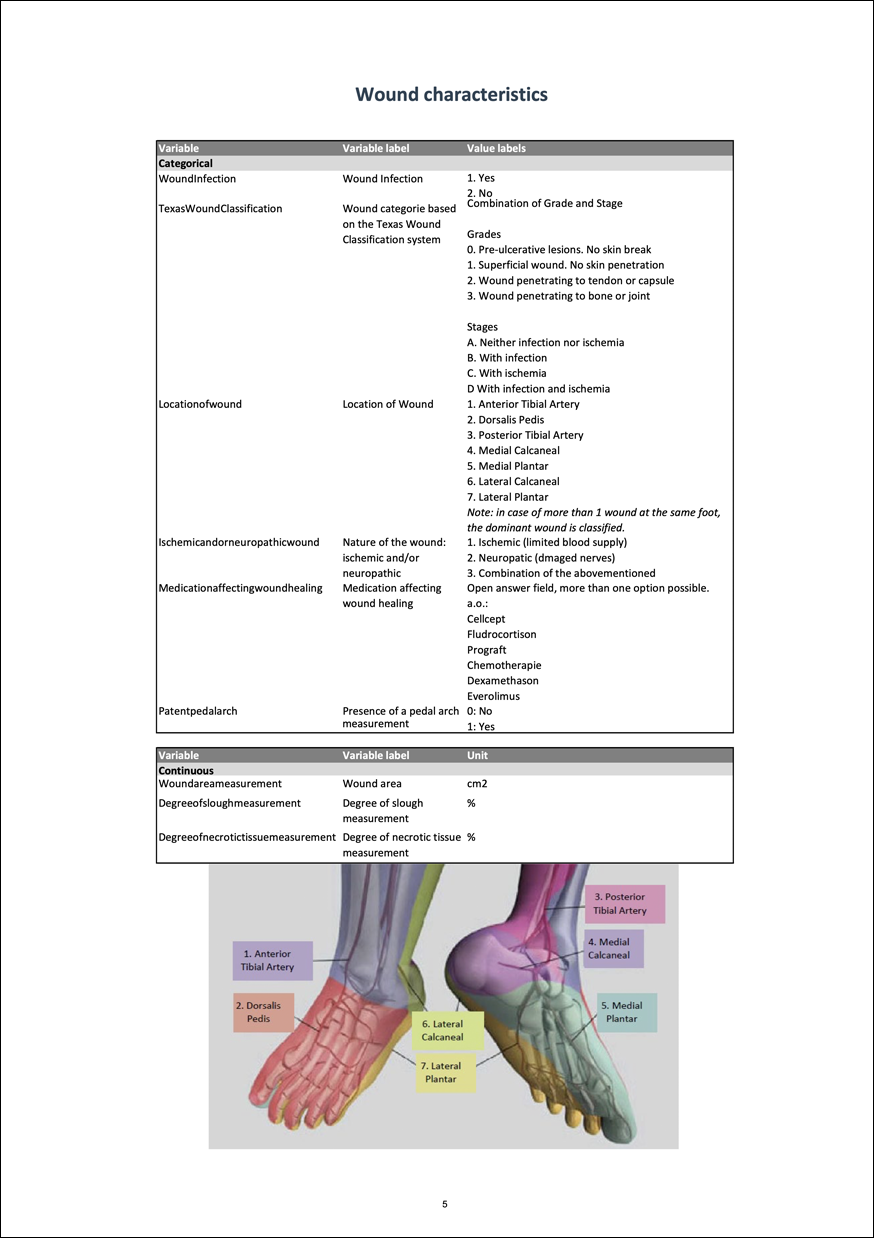A Diabetic Foot Ulcer (DFU) is a serious complication of diabetes and can lead to a lower limb amputation if not treated properly and in an early stage [1]. A DFU is often caused by poor blood circulation and neuropathy and therefore also heals poorly. For these long-term non-healing wounds, infection is a threat. If the wound does not heal or if an infection spreads, amputation is sometimes unavoidable [2].
DFU patients will become more common in the future. By 2045, the number of diabetic patients will have increased from 480 to 700 million, meaning more than 100 million people will get a DFU [3]. The World Health Organization (WHO) estimates that, throughout the world, a lower limb is lost every 30 seconds due to diabetes [4]. If healthcare does not improve, amputation or even death will be inevitable for 12-15% of the patients. In this way, healthcare will come under a great deal of pressure in terms of capacity and financially [3].
Constant advances in technology means the use of Machine Learning (ML) algorithms in healthcare is becoming an increasingly popular approach [5]. Their ability to reduce human error, cost, number of personnel and time taken to complete tasks are useful features [5]. ML algorithms are characterized by their ability to learn and adapt over time without being explicitly programmed. ML can be classified into supervised learning, which trains a model on known input and output data so that it can predict future outputs and unsupervised learning, which finds hidden patterns or intrinsic structures in input data [5]. Numerous studies show that proper diagnosis and management of DFUs can greatly reduce or prevent serious complications [6,7,8,5,9]. Despite various national and international guidelines, the management of DFUs remains inconsistent. Due to the importance of reliable and quick management in diabetic patients, ML has great potential to improve healthcare systems. In recent years, research on automation using computer vision and ML methods plays an important role in DFU treatment. Promising successes have already been achieved so far [3]. What makes this research stand out is because of all the findings within this research field, this is the first systematic review since 2020. In a research field that develops as fast as ML does, it is of high importance that an updated summary is made with regular interval. However, are the algorithms developed in the past two years accurate enough? Will it work with currently used and new perfusion imaging techniques? This work aims to investigate ways to improve treatment approaches for DFUs using ML.
References
- Al-Garaawi, N., Ebsim, R., Alharan, A. F., & Yap, M. H. (2022). Diabetic foot ulcer classification using mapped binary patterns and convolutional neural networks. Computers in Biology and Medicine. https://doi.org/10.1016/j.compbiomed.2021.105055
- Goyal, M., Reeves, N. D., Davison, A. K., Rajbhandari, S., Spragg, J., & Yap, M. H. (2020). DFUNet: Convolutional Neural Networks for Diabetic Foot Ulcer Classification. IEEE Transactions on Emerging Topics in Computational Intelligence. https://doi.org/10.1109/tetci.2018.2866254
- Choke, E., Tang, T. Y., Cheng, S. C., & Tay, J. S. (2019). Treatment of lower limb ischaemia in patients with diabetes. Diabetes/Metabolism Research and Reviews. https://doi.org/10.1002/dmrr.3262
- Schäfer, Z., Mathisen, A., Svendsen, K., Engberg, S., Rolighed Thomsen, T., & Kirketerp-Møller, K. (2021). Toward Machine-Learning-Based Decision Support in Diabetes Care: A Risk Stratification Study on Diabetic Foot Ulcer and Amputation. Frontiers in Medicine. https://doi.org/10.3389/fmed.2020.601602
- Tulloch, J., Zamani, R., & Akrami, M. (2020). Machine Learning in the Prevention, Diagnosis and Management of Diabetic Foot Ulcers: A Systematic Review. IEEE Access. https://doi.org/10.1109/access.2020.3035327
- Zhao, X., Liu, Z., Agu, E., Wagh, A., Jain, S., Lindsay, C., & Fitridge, R. (2019). Fine-Grained Diabetic Wound Depth and Granulation Tissue Amount Assessment Using Bilinear Convolutional Neural Network. IEEE Access. https://doi.org/10.1109/access.2019.2959027
- Wang, L., Pedersen, P. C., Strong, D. M., Tulu, B., Agu, E., Ignotz, R., & He, Q. (2015). An Automatic Assessment System of Diabetic Foot Ulcers Based on Wound Area Determination, Color Segmentation, and Healing Score Evaluation. Journal of Diabetes Science and Technology. https://doi.org/10.1177/1932296815599004
- Goyal, M., Reeves, N. D., Rajbhandari, S., Ahmad, N., Wang, C., & Yap, M. H. (2020). Recognition of ischaemia and infection in diabetic foot ulcers: Dataset and techniques. Computers in Biology and Medicine. https://doi.org/10.1016/j.compbiomed.2020.103616
- Khandakar, A., Chowdhury, M. E., Ibne Reaz, M. B., Md Ali, S. H., Hasan, M. A., Kiranyaz, S., Rahman, T., Alfkey, R., Bakar, A. A. A., & Malik, R. A. (2021). A machine learning model for early detection of diabetic foot using thermogram images. Computers in Biology and Medicine. https://doi.org/10.1016/j.compbiomed.2021.104838
Article is under review!



